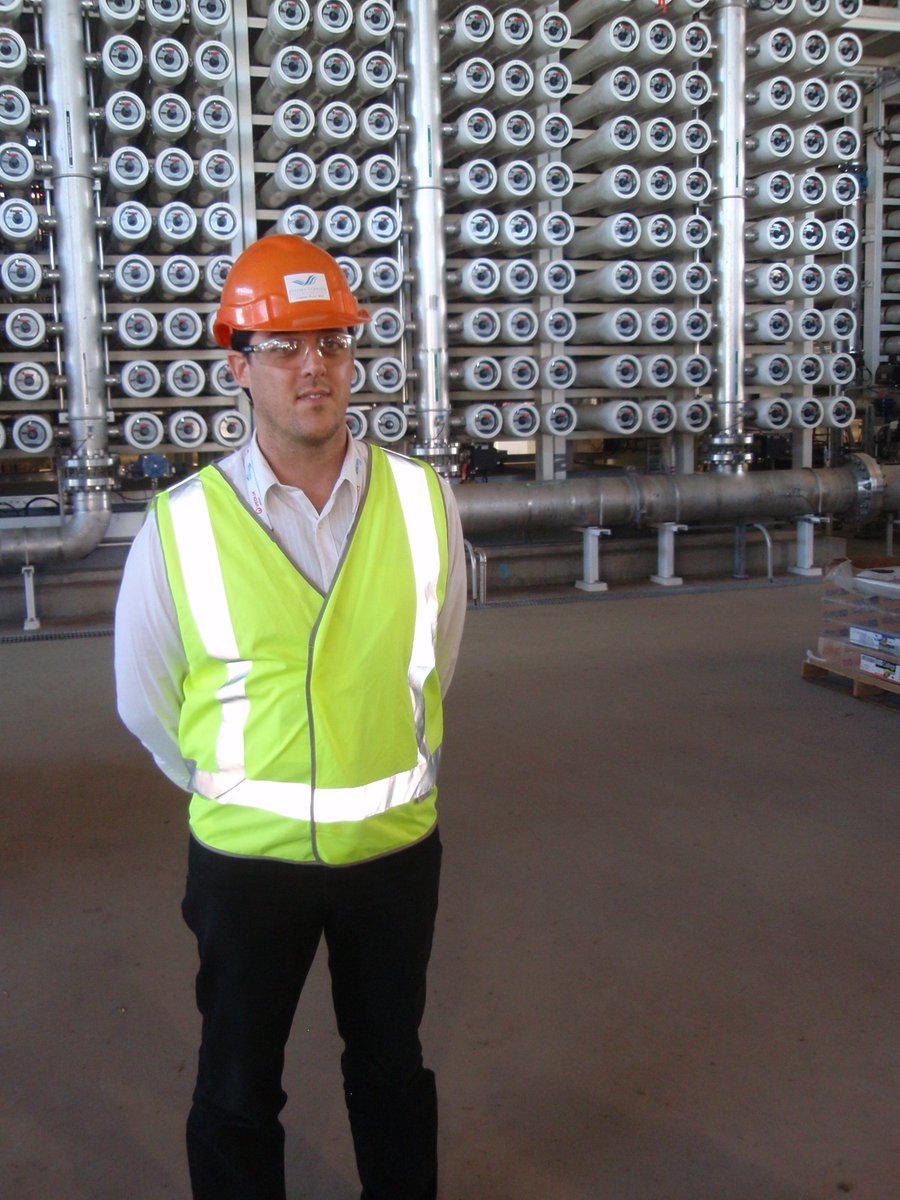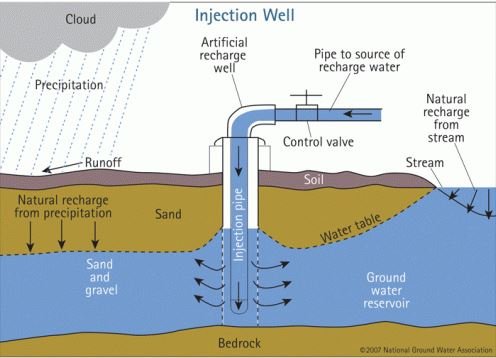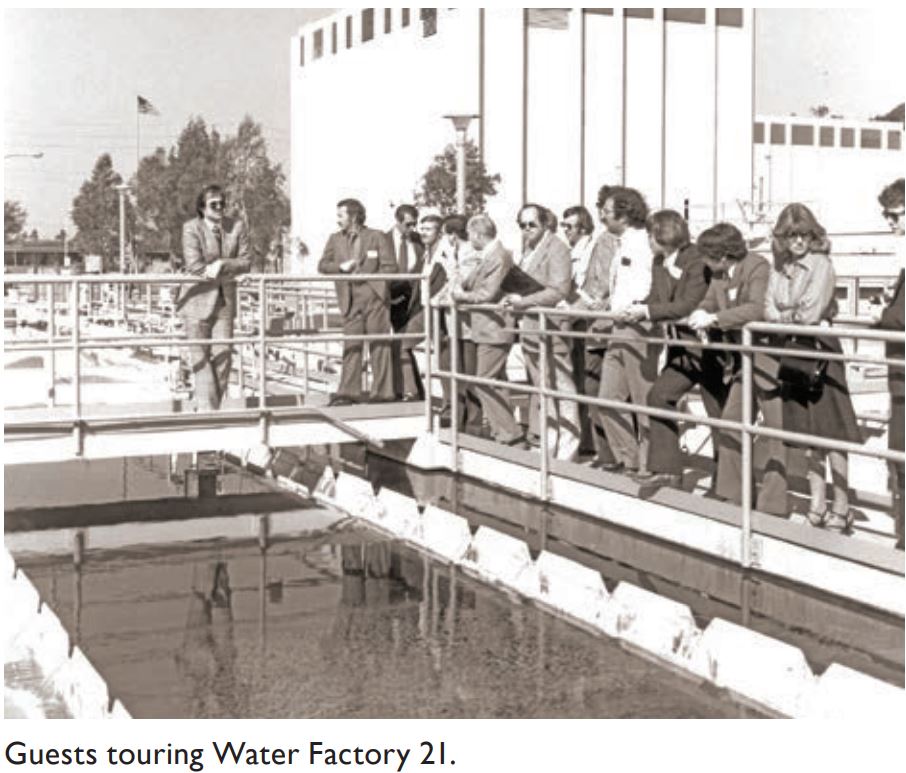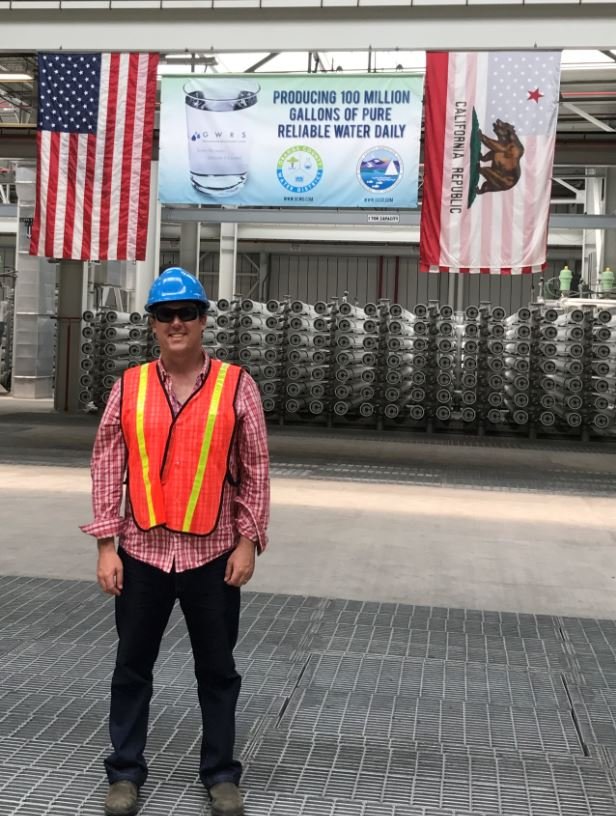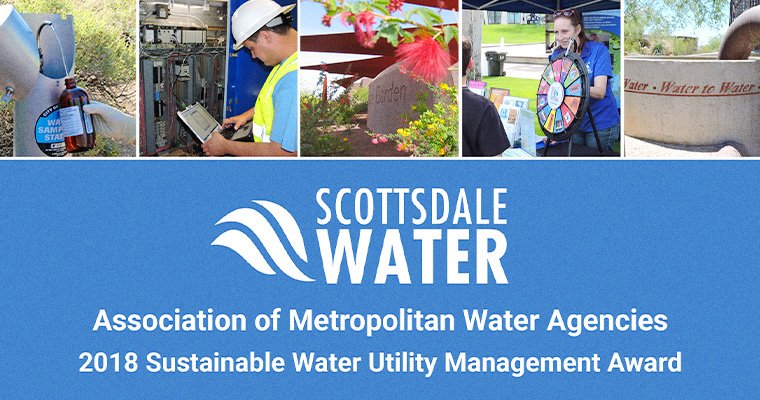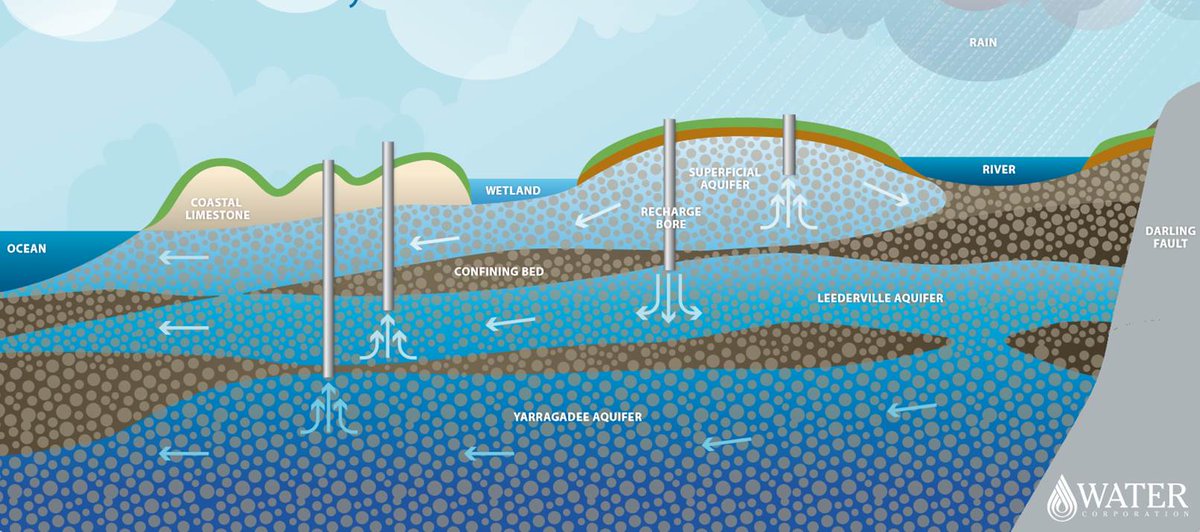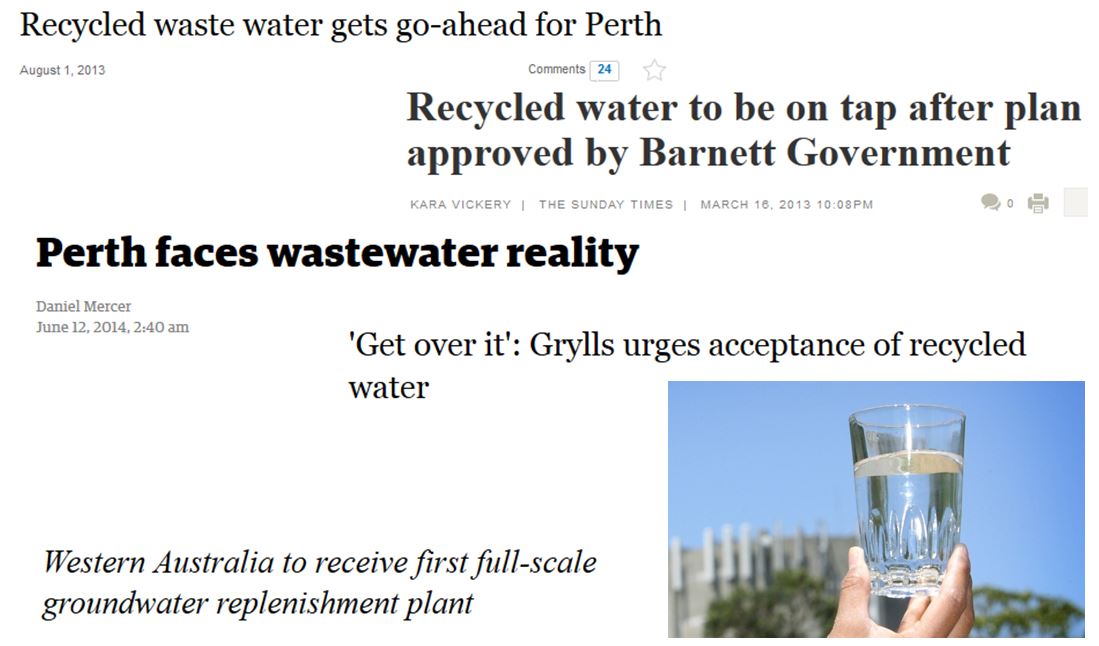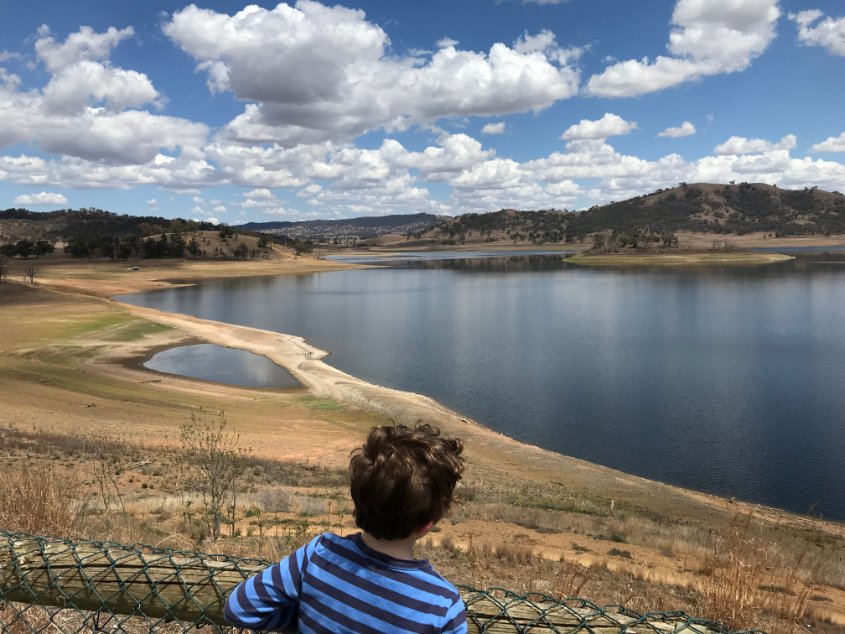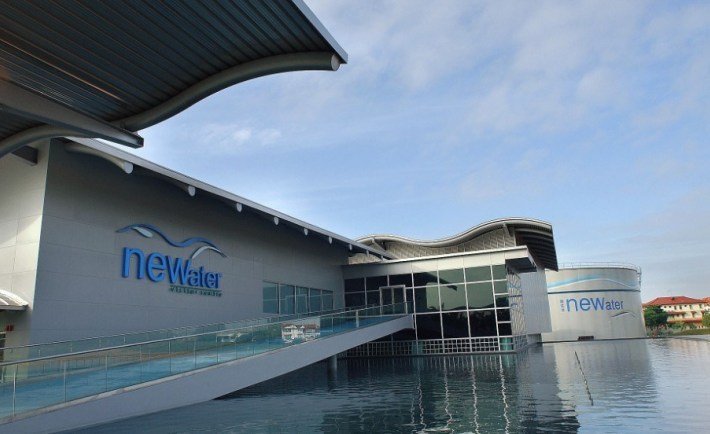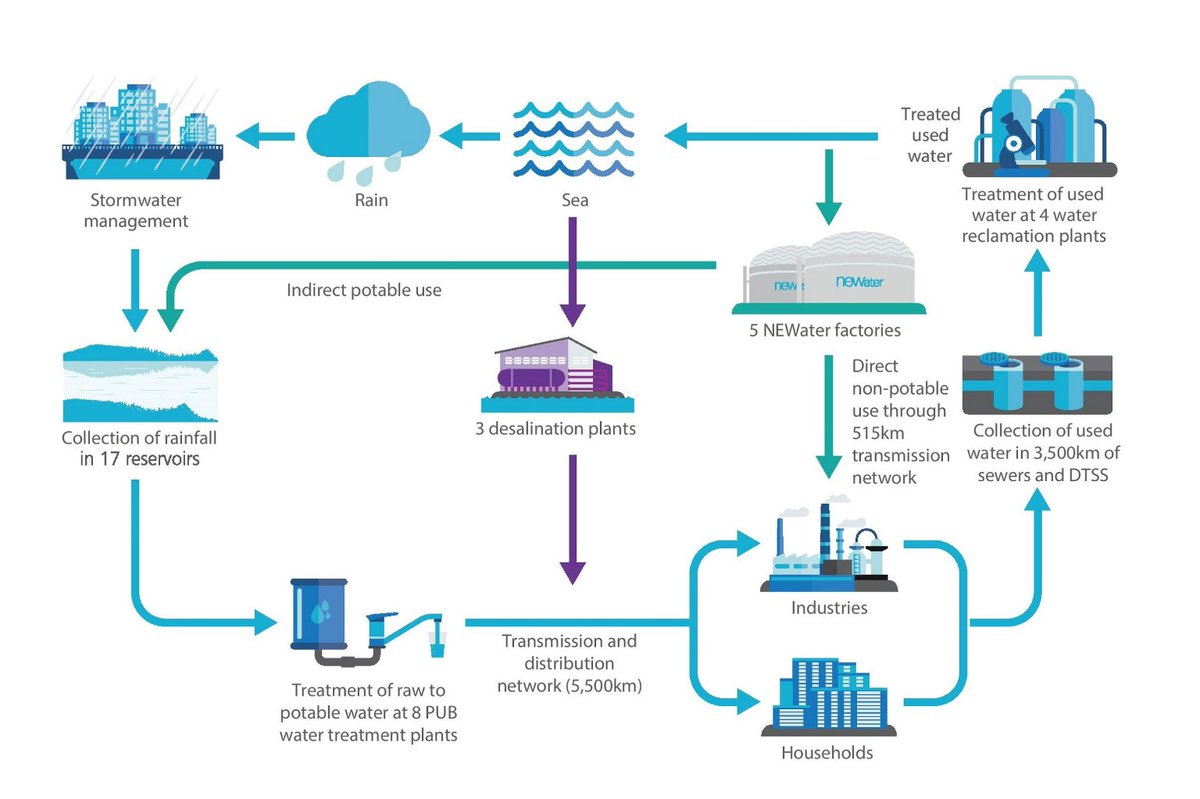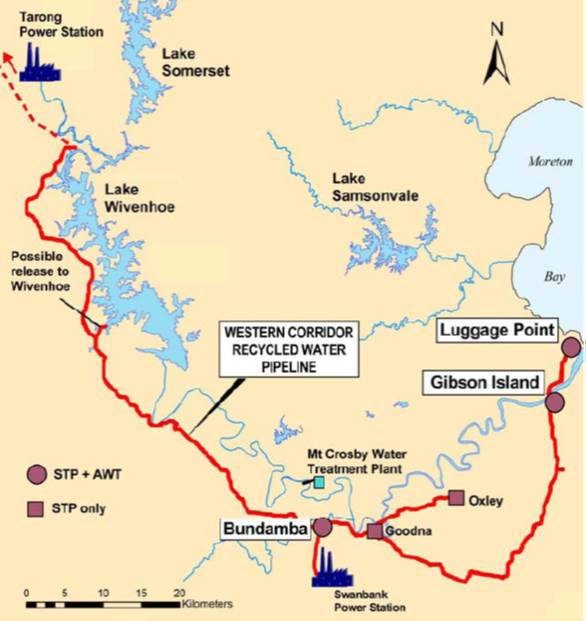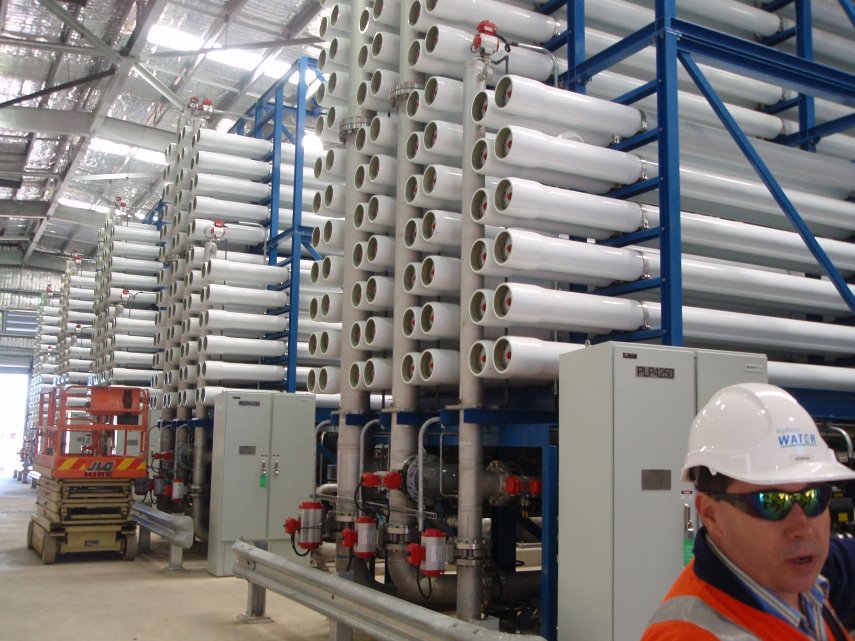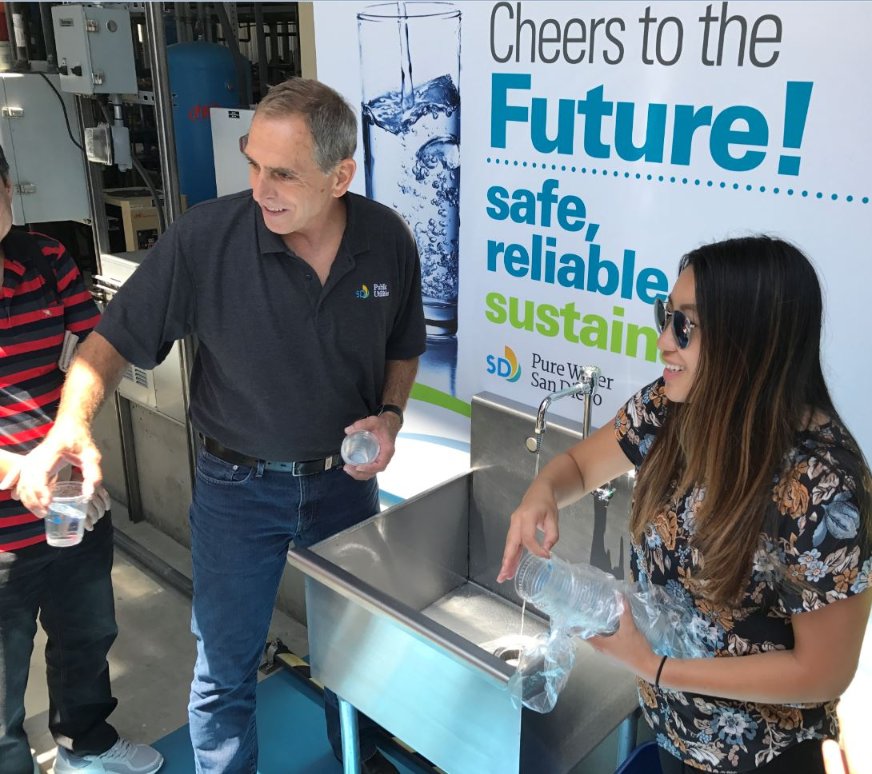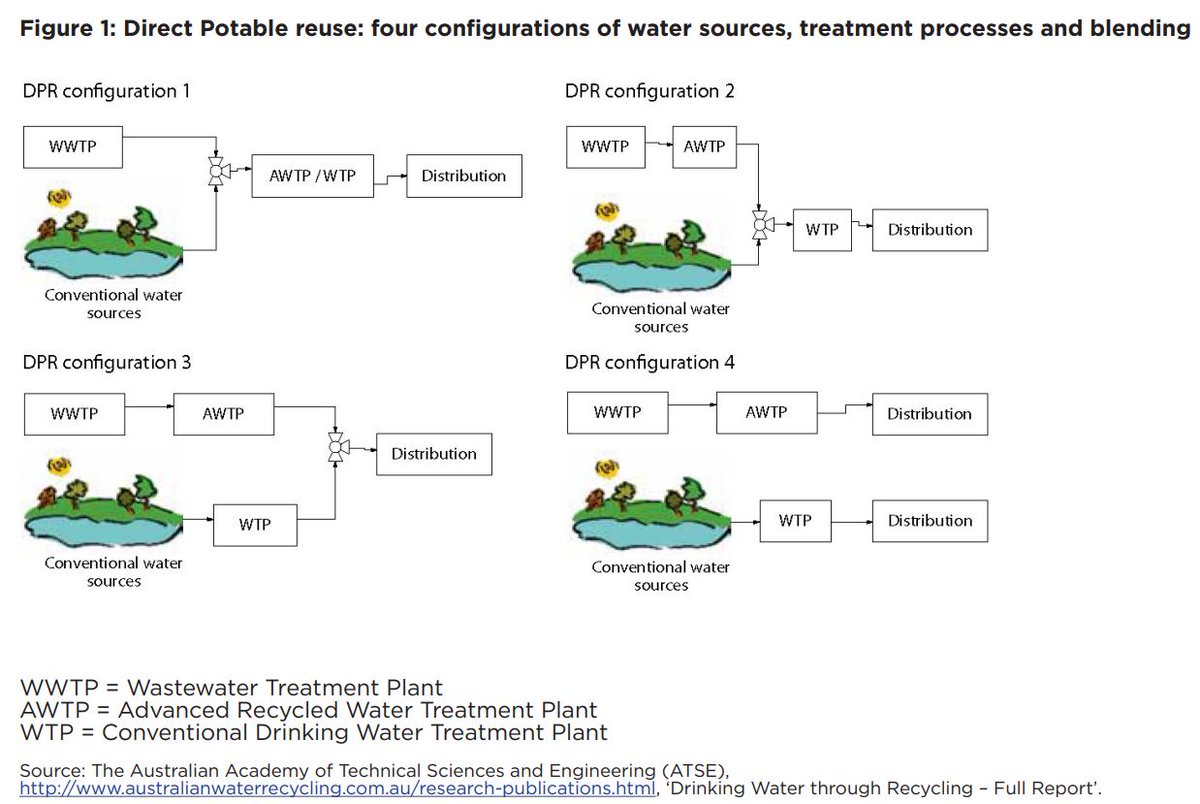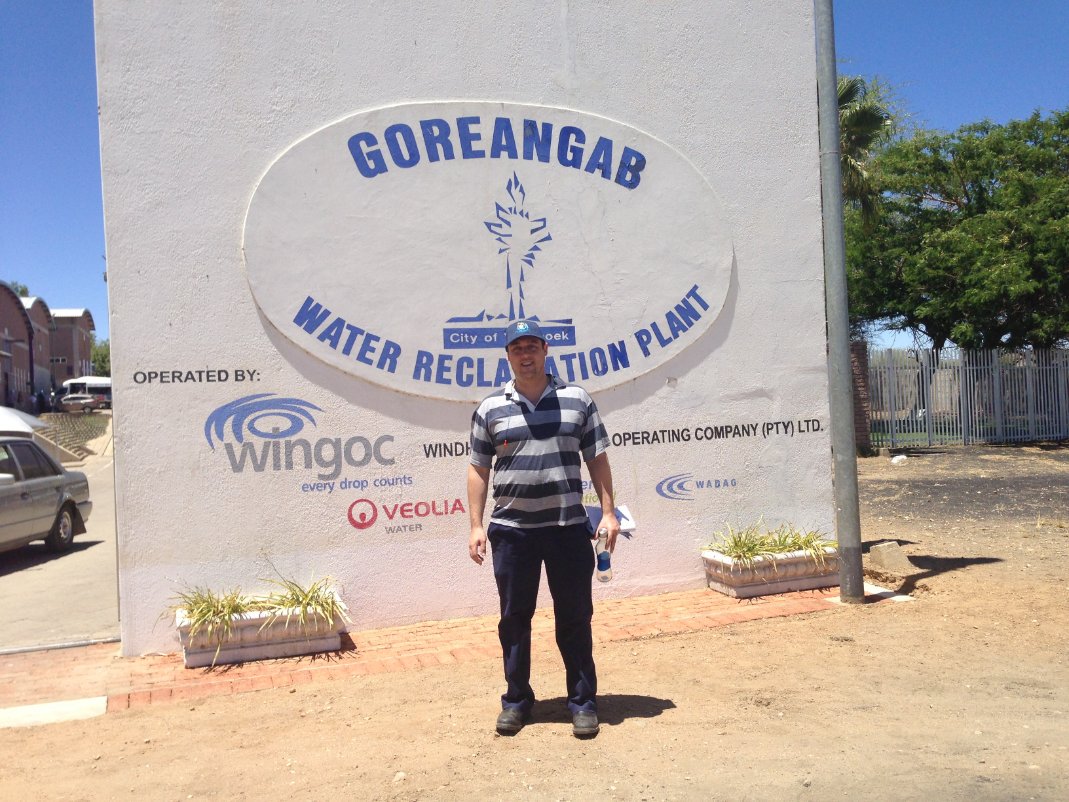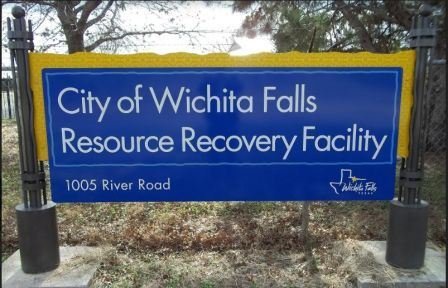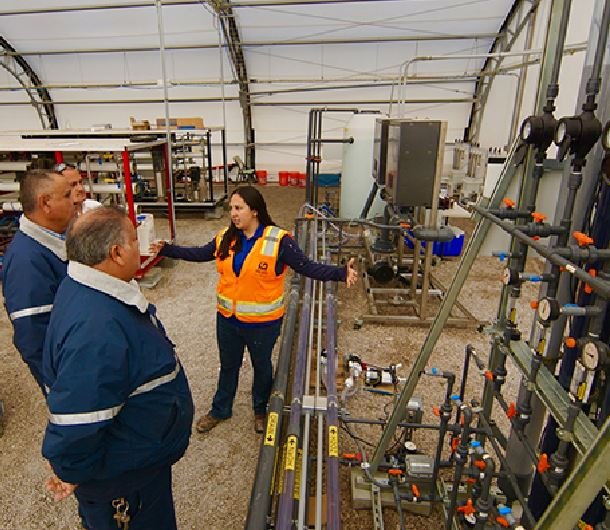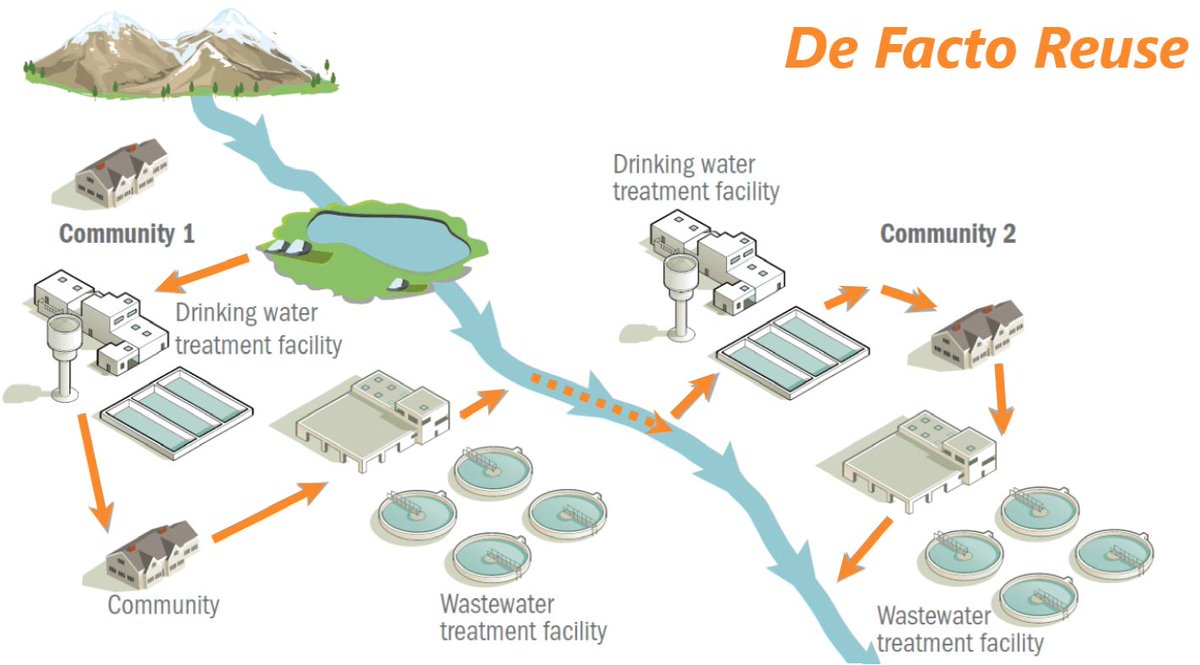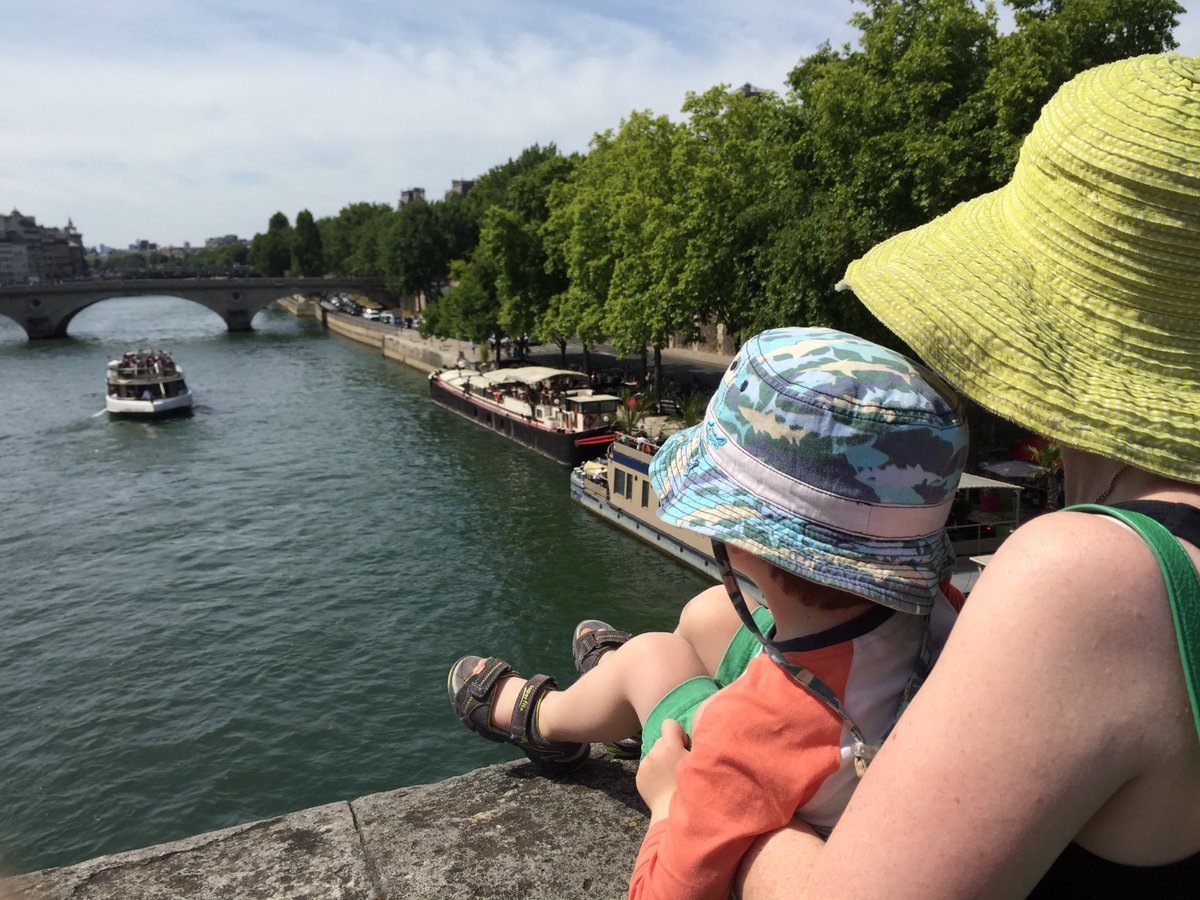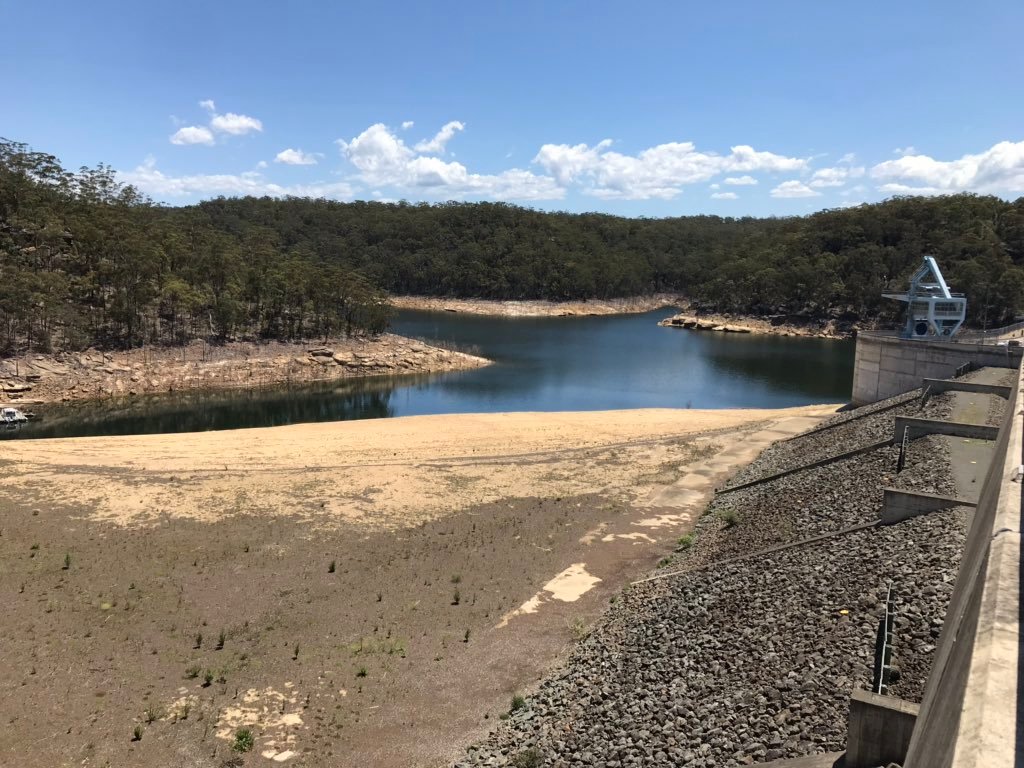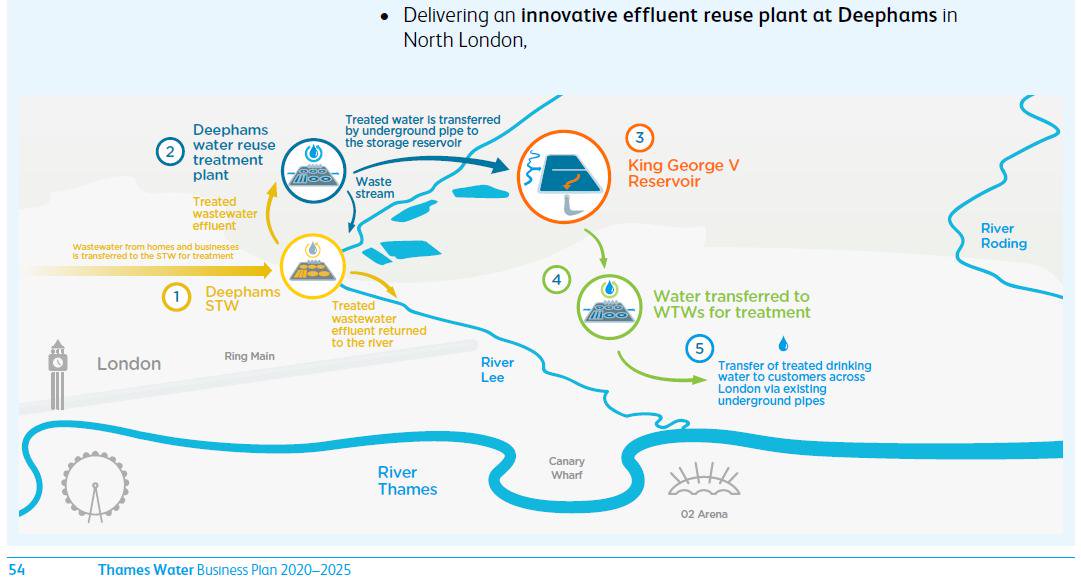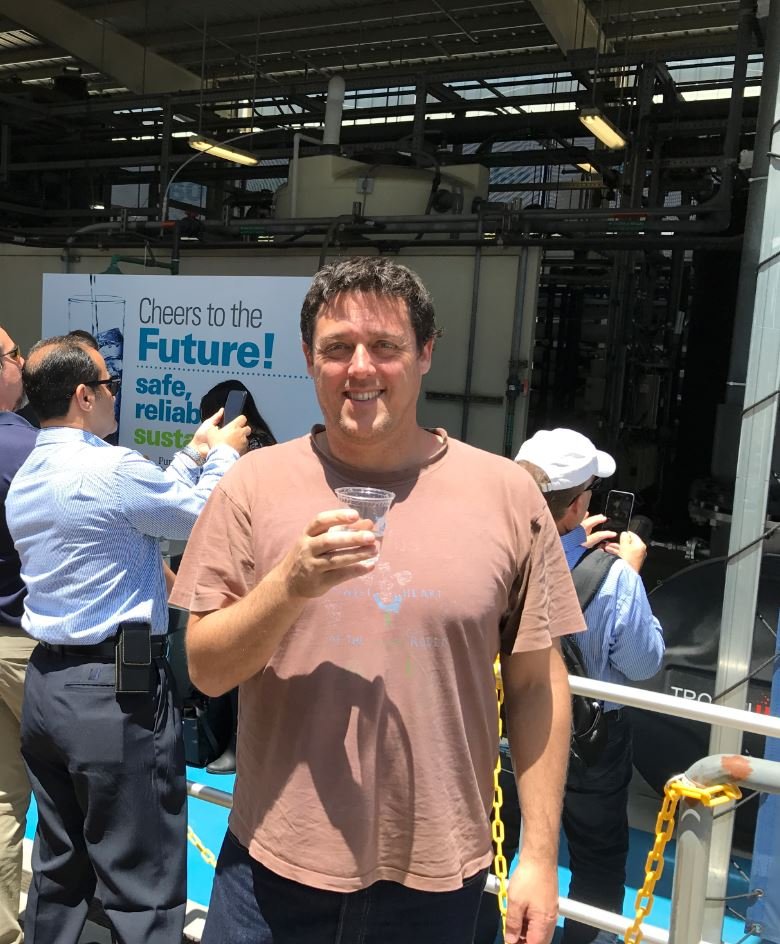Which places around the world are successful examples of drinking water recycling? If you want to know the answer, this thread is for you. It includes examples of groundwater replenishment, surface water augmentation and what is known as 'direct potable reuse' (DPR).
Cities that rely on groundwater for drinking water can find that aquifers become depleted when the rate of use is greater than the natural rate of recharge. Groundwater replenishment is the practice of purposefully recharging the aquifer and this can be done with recycled water.
The pioneering groundwater replenishment project was at Montebello Forebay in Los Angeles County, California. Treated effluents from sewage treatment plants have been used for replenishment since 1962. Additional treatment processes (filtration & UV) have been added over time.
Another important Californian project was known as Water Factory 21 and operated in Orange County from 1976. This was a significant project since it introduced “reverse osmosis” membrane technology to water recycling, as well as high energy UV radiation for chemical destruction.
Due to a need to expand capacity, Water Factory 21 was decommissioned in 2004 and replaced in 2008 by the world’s largest recycling plant, the Groundwater Replenishment System. The GWRS can produce 350 megalitres per day (ML/day) and is now undergoing expansion to 500 ML/day.
Groundwater replenishment is also practiced in Arizona. Since 1998, the City of Scottsdale (pop. 240k) has produced recycled water by ozonation, reverse osmosis and UV disinfection to recharge the city's drinking water aquifer. In 2017 alone, the city recharged >6 billion litres.
The small town of Wulpen on Belgium’s Flemish coast has adopted similar groundwater replenishment. In 2002, a wastewater facility was upgraded for advanced treatment using ultrafiltration and reverse osmosis and is now used to replenish drinking water in the St-André aquifer.
Perth (Western Australia) has also developed the Groundwater Replenishment Scheme (GWRS). The GWRS began operation in 2017. Water from Beenyup sewage treatment plant is now purified and used to recharge two important drinking water aquifers (Leederville & Yarragadee aquifers).
The Perth GWRS has received support from all sides of politics in WA and is now being expanded to double capacity in early 2020. It is proposed that by 2060, groundwater replenishment could recycle 315 ML/day or 115 gigalitres (GL) per year into aquifers near Perth.
An alternative approach to drinking water recycling is the use of recycled water to recharge surface water systems, such as rivers, lakes or dams. This practice is known as surface water augmentation.
A surface water augmentation project was developed by the Upper Occoquan Service Authority in Virginia, USA in 1978. It produces 200 ML/day of recycled water to supplement supplies in the Occoquan Reservoir, supplying drinking water to 1.5 million residents of northern Virginia.
Singapore began practising surface water augmentation for potable reuse in 2003 with construction of two recycling plants at Bedok and Kranji. Since then, additional plants were constructed at Seletar in 2004 (decommissioned in 2011), Ulu Pandan in 2007 and Changi in 2010.
Singapore recycled water is primarily supplied to industry such as silicon wafer fabrication plants. During dry periods, >100 ML/day are used to replenish surface water reservoirs, with an average of 30-40 ML/day. The 4 plants can meet ~30% of Singapore's total water needs.
Gwinnett County, Georgia (USA) produces 230 ML/day recycled water, which augments drinking water supplies in Lake Lanier. This scheme is notable as a large surface water augmentation scheme relying on ozone and activated carbon treatment, rather than reverse osmosis.
The Western Corridor Recycled Water Scheme was developed in Brisbane to produce ~200 ML/day recycled water. It's currently not operating but when needed, can be used to provide water for Wivenhoe Dam. SE QLD dam levels dropping <60% of capacity will trigger a gradual start-up.
The Prairie Waters Project in Aurora, Colorado exemplifies another approach to water recycling. In this case, source water is taken from the South Platte River, immediately downstream from the Denver Metro Wastewater Treatment Plant, where the flow is ~80% wastewater discharge.
St Marys Advanced Water Recycling Plant takes water from 3 Sydney sewage treatment plants & purifies it by reverse osmosis before it is delivered to the Nepean River. The North Richmond Water Filtration Plant takes the water from the river to produce drinking water for NW Sydney.
In 2014, San Diego City voted to construct a project to recycle over 110 ML/day by 2023 (Phase 1) and over 310 ML/day by 2035 (Phases 2 and 3) by surface water augmentation. This project has been branded ‘Pure Water San Diego’ and is expected to provide 30% of San Diego’s water.
Some cities have developed water recycling projects that include neither groundwater replenishment, nor the augmentation of a surface water supply. This practice, known as direct potable reuse (DPR) has been used in the city of Windhoek, Namibia for over 50 years (since 1968).
In 1968 the Windhoek Goreangab water treatment plant was converted to treat wastewater from the city’s sewage treatment plant as an additional source to the Goreangab Dam. The plant was thus renamed the Goreangab Water Reclamation Plant, supplying drinking water to the city.
During the 1990s, it was determined that additional capacity and improved water quality would be required. A new plant, known as the New Goreangab Water Reclamation Plant, was completed in 2002. Recycled water provides around 35% of the drinking water supplied from it.
Beaufort West Municipality is situated in central Karoo, approximately 500 km NE of Cape Town, South Africa. It is home to 40,000 people and one of the driest parts of South Africa. A direct potable reuse plant was constructed in 2011 and has been supplying drinking water since.
Big Spring is a city of ~30,000 people in West Texas, USA. The city began direct potable reuse in 2013 with purified recycled water now delivered directly into the pipeline which also conveys raw lake water to the city’s drinking water treatment plant.
Texas city Wichita Falls (pop 100k) operated a temporary DPR scheme during extreme drought in 2014-2015. The system was subsequently converted from DPR to surface water augmentation since that enabled 'reverse osmosis' to be eliminated & higher recoveries of water to be achieved.
El Paso, Texas has recycled water by groundwater replenishment since the 1980s, but since 2013 has been planning for direct potable reuse (DPR). The design of a DPR scheme to deliver purified drinking water direct to the drinking water distribution system is currently underway.
There are many cities around the world which happen to source drinking water from rivers, which have other cities discharging treated sewage effluents into them upstream. While these may not be “acknowledged” recycling projects, they're sometimes called "de facto" potable reuse.
De facto potable reuse occurs for cities all along great urban rivers, such as The Thames, The Mississippi, The Ohio, The Rhine, and The Seine. Cities with significant de facto potable reuse include London, Paris, Berlin, Cincinnati, New Orleans, Bonn, Cologne, and Dusseldorf.
De facto potable reuse also occurs with sewage treatment plants (STPs) upstream of major Australian drinking water supplies. Eg. Goulburn & Lithgow STPs upstream of Warragamba (Sydney), Lilydale STP upstream of Sugarloaf (Melb), Hahndorf STP upstream of Mount Bold (Adelaide).
And there are numerous big cities actively planning new drinking water recycling projects for the future. For example, Thames Water Business Plan 2020-2025 illustrates new recycling plans for London very clearly.

 Read on Twitter
Read on Twitter